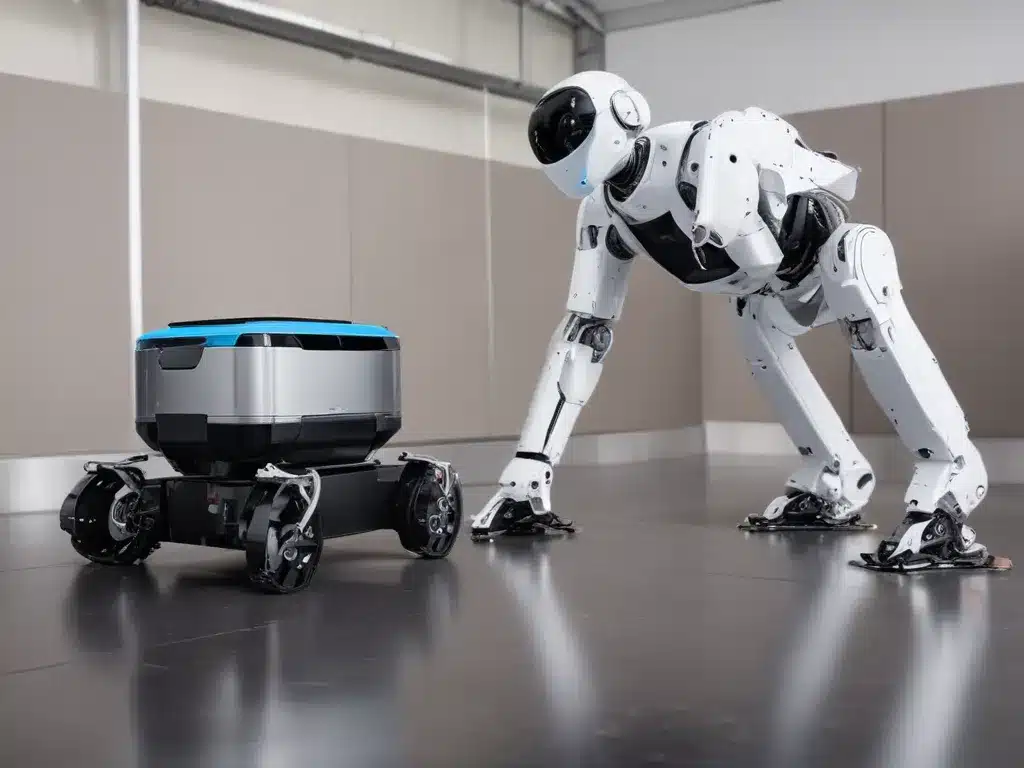Introduction
As technology advances, innovative solutions emerge to address time-consuming household chores. Smart mopping robots have gained popularity as a potential labor-saving device, promising to automate the task of floor cleaning. However, the question remains: Do these robotic mops truly eliminate manual labor, or are they merely a supplementary tool? In this comprehensive article, I will delve into the world of smart mopping robots, evaluating their capabilities, limitations, and real-world effectiveness.
What are Smart Mopping Robots?
A smart mopping robot is an autonomous device designed to clean and mop floors with minimal human intervention. These robots typically combine advanced sensors, navigation systems, and cleaning mechanisms to map out rooms, detect obstacles, and efficiently cover floor surfaces. Some popular examples of smart mopping robots include the iRobot Braava Jet, Roborock S7, and Ecovacs Deebot Ozmo.
Key Features and Capabilities
Mapping and Navigation
Smart mopping robots employ various technologies to navigate and map out living spaces. Some use SLAM (Simultaneous Localization and Mapping) algorithms, while others rely on camera-based navigation or laser-based LiDAR systems. This allows the robots to create virtual maps of the area, ensuring thorough coverage and avoiding obstacles.
Cleaning Mechanisms
These robots utilize different cleaning mechanisms to tackle different floor types. Some feature microfiber pads or reusable cloths for dry sweeping, while others incorporate water tanks and mopping pads for wet cleaning. Advanced models may even offer features like automatic carpet detection, which prevents them from mopping carpeted areas.
Connectivity and Smart Home Integration
Many smart mopping robots can connect to Wi-Fi networks, enabling remote control and scheduling through mobile apps or voice commands. Some models also integrate with smart home ecosystems like Amazon Alexa or Google Assistant, allowing for seamless operation within connected homes.
Pros and Cons of Smart Mopping Robots
Pros
- Time-saving: Smart mopping robots can automate the time-consuming task of floor cleaning, freeing up time for other activities.
- Convenience: With scheduling and remote control features, these robots can clean floors even when you’re away from home.
- Thorough Coverage: Advanced navigation systems ensure that no area is left unattended, resulting in a more comprehensive clean.
- Accessibility: For individuals with mobility issues or physical limitations, smart mopping robots can provide a valuable solution for maintaining clean floors.
Cons
- Initial Cost: High-quality smart mopping robots can be expensive, potentially deterring some consumers.
- Maintenance Requirements: Regular cleaning, filter replacements, and occasional battery replacements may be necessary.
- Limited Cleaning Power: While efficient for daily maintenance, these robots may struggle with heavy-duty cleaning tasks or tough stains.
- Potential Interference: Obstacles, clutter, or complex floor plans can impede the robot’s navigation and cleaning performance.
Real-World Effectiveness
To gauge the real-world effectiveness of smart mopping robots, I spoke with several homeowners who have incorporated these devices into their cleaning routines.
User Testimonials
Sarah, a busy working professional: “The smart mopping robot has been a game-changer for me. I can schedule it to clean while I’m at work, and when I come home, the floors are spotless. It has significantly reduced the time I spend on household chores.”
Tom, a father of three: “While the robot isn’t a complete replacement for manual cleaning, it has definitely cut down on the frequency of deep cleaning sessions. It’s great for maintaining a decent level of cleanliness between more thorough cleanings.”
Emily, a homeowner with mobility issues: “Having a smart mopping robot has been incredibly helpful for me. It allows me to keep my floors clean without putting unnecessary strain on my body. It’s not perfect, but it’s a vast improvement over relying solely on manual cleaning.”
Drawbacks and Limitations
While smart mopping robots offer numerous benefits, they are not without their limitations. Some common drawbacks include:
- Inability to Clean Stairs: Most smart mopping robots are designed for flat surfaces and cannot navigate stairs or multi-level homes.
- Limited Cleaning Power for Tough Stains: For heavily soiled or stained areas, manual scrubbing may still be required.
- Need for Human Intervention: Robots may occasionally get stuck or require assistance in navigating complex environments.
- Battery Life and Charging Considerations: Depending on the size of the area and battery capacity, robots may need to be recharged during longer cleaning sessions.
Integration with Professional Cleaning Services
While smart mopping robots can be valuable additions to household cleaning routines, they should not be viewed as complete replacements for professional cleaning services. In fact, many cleaning companies are exploring ways to integrate these robots into their service offerings.
By combining the efficiency of smart mopping robots with the expertise and attention to detail of professional cleaners, households can achieve a higher level of cleanliness and hygiene. Robots can handle daily maintenance, while professional cleaners can focus on more thorough deep cleaning tasks, ensuring a comprehensive cleaning solution.
Conclusion
In conclusion, smart mopping robots have the potential to significantly reduce manual labor associated with floor cleaning. They offer convenience, time-saving benefits, and thorough coverage. However, it is essential to recognize their limitations and understand that they may not completely eliminate the need for manual cleaning or professional services.
Ultimately, the decision to invest in a smart mopping robot should be based on individual needs, living space, and budget considerations. For some households, these robots can be invaluable tools that enhance cleanliness and free up time for other priorities. For others, they may serve as supplementary aids to traditional cleaning methods.
As technology continues to evolve, we can expect even more advanced and capable smart mopping robots to emerge, further blurring the line between automated and manual cleaning. Until then, it is crucial to approach these devices with realistic expectations and an understanding of their strengths and weaknesses.







